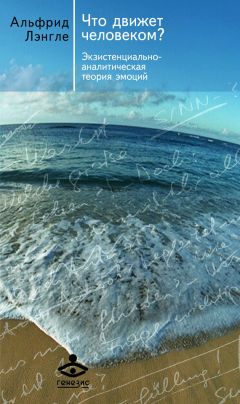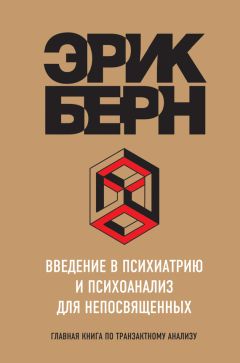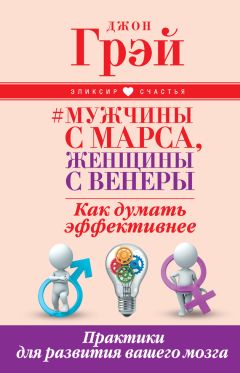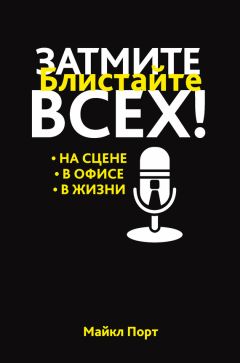Istvan Urban - Vertical 2: The Next Level of Hard and Soft Tissue Augmentation
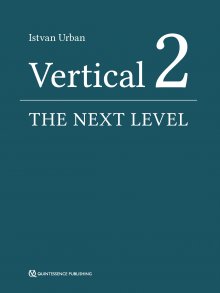
Скачивание начинается... Если скачивание не началось автоматически, пожалуйста нажмите на эту ссылку.
Жалоба
Напишите нам, и мы в срочном порядке примем меры.
Описание книги "Vertical 2: The Next Level of Hard and Soft Tissue Augmentation"
Описание и краткое содержание "Vertical 2: The Next Level of Hard and Soft Tissue Augmentation" читать бесплатно онлайн.
A major part of this book comprises full-color, step-by-step images of patient cases. At times, reading it is like watching a surgical video, where the author 'stops the video' to discuss with you, the reader, what he is thinking and doing at that step, what his next step will be, and the reason for it.
Included again are the well-appreciated 'Lessons learned' sections, where the learning objectives are emphasized and further notes given, including ways to further improve the techniques. The section on the mandible is more detailed in this book, with the focus on larger defects and the different surgical steps in native, fibrotic, and scarred tissue types around the mental nerve during flap advancement.
In addition, light is shed on the detail in treating the anterior maxilla, which has not been published previously. It includes treatment options such as the fast track, the safe track, and the technical track of soft tissue reconstruction in conjunction with bone grafting as well as papilla reconstructions after bone regeneration. The section on the posterior maxilla hopes to resolve issues such as the management and complications of combined ridge and sinus grafting, including difficulties such as the lack of buccal, crestal or nasal bony walls of the posterior maxilla before bone grafting.
In this must-have new publication, the procedures are kept simple, repeatable, and biologically sound. The techniques presented are not overcomplicated; they are simple treatment strategies with lower complication rates and more predictability in the final outcome.
Fig 1-41 Cross-sectional view of the alkaline phosphatase (ALP) marker. The squares demonstrate the ROIs that were investigated.
Fig 1-42 Graph showing the results of the ALP marker for the three groups investigated.
Immunohistochemistry was also performed, looking at different markers. Of these markers, two demonstrated significantly better results. Osteocalcin (OCN – a marker for osteoblastic activity and level of mineralization) and alkaline phosphatase (ALP – a marker for osteoblastic activity and bone formation) had a significant presence (Figs 1-39 to 1-42).
Figs 1-43 BMP-2/xenograft: Sandwich configuration showing how the BMP-2 is sandwiched inside the xenograft particles (arrow).
Fig 1-44 BMP-2/xenograft: Lasagna configuration showing how the BMP-2 is layered on top of the graft and just below the perforated PTFE membrane (arrow).
These results indicate that the perforated group is more vascularized and has a more active formation. However, the collagen membrane coverage did not seem to be a prerequisite. In fact, the collagen membrane group demonstrated slightly worse results than the group without coverage. This was due to the collagen membrane of choice producing some inflammatory response. It is very likely that the other native type of collagen membranes could help in reducing soft tissue ingrowth. For this reason, the author uses a collagen membrane in conjunction with a perforated PTFE membrane.
III. The effect of the use of a microdose of BMP-2 in combination with an osteoconductive xenograft
This investigation looked at whether the use of a perforated membrane could result in faster and better bone formation with a microdose of osseoinductive stimuli.
In these cases, < 100 µg BMP-2 was used, either inside the graft or just simply placed on top of the graft. The former is called the Sandwich technique and the latter the Lasagna technique. A pure xenogenic bone graft was used. The layered BMP-2 (Lasagna) developed excellent bone formation, which was better than the internally placed BMP-2 (Sandwich) graft, which failed to form a complete ridge (specifically in the middle of the ridge). Even though the Lasagna configuration only had BMP-2 placed on top of the graft, the bone was more evenly formed throughout the entire new ridge. This investigation again demonstrated the importance of the periosteal connection, especially with a growth factor. Note that the Lasagna configuration resulted in excellent new ridge formation throughout the entire ridge (Figs 1-43 and 1-44).
The final case demonstrates the Lasagna technique, where a low dose of BMP-2 was used on top of the graft to improve and accelerate the bone formation (Figs 1-45 to 1-49). Note the complete vertical bone regeneration and the excellent bone quality with minimal smear layer that was regenerated.
Fig 1-45 Labial view of an advanced vertical defect.
Fig 1-46 A 1:1 ratio of autogenous bone mixed with ABBM is used.
Fig 1-47 A BMP-2–infused collagen membrane is layered on top of the graft (Lasagna technique).
Fig 1-48 A perforated dense PTFE (d-PTFE) membrane is used to immobilize the graft.
Fig 1-49 Labial view of the ridge after 9 months of uneventful healing.
Conclusion
The perforated membrane shows that the clinician may expect better bone quality and faster bone formation. It also sheds light on how to use growth factors. Autogenous particulated bone has several growth factors such as BMP-2 and transforming growth factor beta 1 (TGF-B1), hence these results can likely be applied to the autograft/xenograft mixture that is used throughout this book. In some cases, the author has used the Lasagna type of graft with excellent results.
It is also clear that the periosteum should not be blocked, and if a collagen membrane is used, it should be a native collagen membrane that resorbs as rapidly as possible. Crosslinked collagen membranes should not be used over perforated PTFE membranes. Also, particulated bone chips may release more BMP-2 than an autogenous cortical block.
Reference
1. Urban IA, Montero E, Monje A, Sanz-Sánchez I. Effectiveness of vertical ridge augmentation interventions: a systematic review and meta-analysis. J Clin Periodontol 2019;46(suppl 21):319–339.
Additional reading
1. Urban I, Baczko L, Parkany I, Coelho P, Tovar N, Nagy K. Dense versus perforated PTFE membranes using BMP-2 grafting [in progress].
2. Urban I, Farkasdi S, Munoz F, VIgnoletti F, Varga G. Dense versus perforated PTFE membranes using a xenogenic graft material [in progress].
3. Urban I. Dense versus a novel form of stable collagen membrane using a xenogenic graft material [in progress].
4. Urban I, Farkasdi S, Bosshard D, Owusu S, Wikesjo U. Perforated PTFE membranes using a microdose of BMP-2 in conjunction with a xenogenic graft material [in progress].
2
Scientific evidence of vertical bone augmentation utilizing a titanium-reinforced polytetrafluoroethylene mesh
Introduction
This chapter examines how a dense polytetrafluoroethylene (d-PTFE) mesh was investigated in the author’s clinical practice. The primary study objectives were:
1. To evaluate the amount of bone height gain in millimeters and as a percentage of the baseline deficiency as a result of vertical bone augmentation (VBA) using a titanium-reinforced PTFE mesh (RPM) with mixed autogenous and anorganic bovine bone mineral (ABBM) particulate grafts.
2. To examine the influence of defect location, baseline deficiency extent, and membrane exposure on augmentation height.
3. To report the incidence of surgical and postsurgical complications associated with this treatment.
Materials and methods
Fifty-seven consecutive patients who had been treated using RPM with mixed autogenous and ABBM particulate grafts for pre-implantation VBA between August 2016 and June 2019 were included for analysis. All patients were treated at one private practice (Urban Regeneration Institute, Budapest, Hungary). All VBA procedures were performed by the same experienced practitioner (IU). Implant placement and subsequent prosthetic treatments were performed by the author (IU) or other private practitioners. Our study was approved by the Institutional Review Board for Human Studies (118/2020-SZTE). Strengthening the Reporting of Observational Studies in Epidemiology (STROBE) guidelines were followed during the preparation of this chapter.
Inclusion and exclusion criteria
The patients included in this study had insufficient vertical bone, which precluded stable dental implant placement or would result in poor crown-to-implant ratios or esthetic compromise. Participants were required to have sound physical health and good oral hygiene prior to treatment (Plaque Index of < 10%).1
Patients were excluded if any of the following criteria were present:
1. Bone augmentation procedures not using RPM.
2. Heavy smokers (> 10 cigarettes/day).
3. History of local radiation therapy within the previous 5 years.
4. Uncontrolled diabetes mellitus.
5. Alcoholism or chronic drug abuse.
6. Any uncontrolled medical conditions.
Surgical procedure
Potential risks and benefits of the VBA procedure were reviewed presurgically with all enrolled patients. Written consent was obtained from all patients prior to surgery. All participants received prophylactic systemic antibiotic coverage with 500 mg amoxicillin three times a day or, in the case of penicillin allergy, 150 mg clindamycin four times a day 24 hours prior to surgery.
A midcrestal incision was made in the keratinized mucosa of the edentulous site to be augmented, and sulcular incisions were made around the adjacent teeth. Periosteal elevators were used to raise full-thickness mucoperiosteal flaps extending at least 5 mm apical to the alveolar crest; particular care was given to sites with thin mucosa or minimal to no keratinized tissue to avoid flap perforation. To enhance access, two vertical releasing incisions were made at least one tooth away from the surgical site. The depth and location of the vertical releasing incisions as well as the technique used for flap management depended on the depth of the vestibule and the extent of the existing defect.2 For mandibular cases, lingual flaps were elevated to the mylohyoid muscle attachment, which was then bluntly separated.3
Each recipient site was decorticated using a small round bur to increase blood supply to the recipient bed. A particulate autograft was harvested with a bone scraper from intraoral sites adjacent to the defect (Osteogenics Biomedical, Lubbock, TX, USA). The amount of bone harvested was based on the size of the graft needed. Autogenous bone particulate was mixed with ABBM (Bio-Oss; Geistlich Pharma, Wolhusen, Switzerland) in a 1:1 ratio and positioned on the residual ridge to mimic the desired bone morphology.
The area to be covered by mesh was estimated using a University of North Carolina-15 (UNC-15 (probe, and an appropriately sized RPM was selected, trimmed, and placed to completely cover the graft and at least 2 mm of adjacent native bone. The mesh was stabilized on the lingual/palatal sides using titanium pins (Master-Pin; Meisinger, Neuss, Germany) or screws (Pro-fix; Osteogenics Biomedical).2 The membrane was then covered with a native collagen membrane in all cases (Bio-Gide; Geistlich Pharma).
Periosteal releasing incisions were carefully made to advance buccal flaps. In premolar sites, the mental nerve was protected, particularly in cases with severe atrophy that demanded more apically extending vertical incisions. Lingual flaps were advanced based on the location of the mylohyoid muscle attachment and were handled according to three previously described zones of interest.3
Double-layered suturing was employed to create intimate tissue adaptation and prevent membrane exposure. In this technique, horizontal mattress sutures (GORE-TEX CV-5 Suture; W. L. Gore & Associates, Flagstaff, AZ, USA) were placed 4 to 5 mm from the incision line. Then, single interrupted sutures were used to secure all flap edges. The sutures were left undisturbed for at least 2 to 3 weeks. The surgical site was allowed to heal for at least 6 months. At re-entry, limited mucoperiosteal flaps were elevated to remove the RPM and titanium pins and/or screws and to perform implant placement.
Postsurgical procedures
A postoperative regimen of amoxicillin 500 mg three times a day for 7 days or, in the case of penicillin allergy, 150 mg clindamycin four times a day for 6 days was prescribed. A nonsteroidal anti-inflammatory drug (50 mg diclofenac potassium three times a day or ibuprofen 200 mg four times a day (was prescribed for 1 week following the surgery. All patients were evaluated at 1, 2 or 3, and 4 weeks following surgery. Intraoperative and postoperative complications such as membrane exposure, intraoperative bleeding, and graft infection were recorded.
Data collection
Patient information including gender, age at the time of surgical treatment, and self-reported cigarette consumption were recorded. Intraoperatively, the extent of the baseline vertical deficiency was measured by one clinician (IU) in millimeters from the residual ridge crest to one reference line using a UNC-15 probe. One of two reference lines was used to ensure consistent vertical measurements and to serve as ideal heights: 1) an imaginary line connecting the interproximal bone height between adjacent teeth; or 2) in the case of distal edentulism, an imaginary line connecting the proximal tooth bone height to the projected non-resorbed alveolar crest of the edentulous area. The vertical bone gain was evaluated at the time of implant placement (re-entry) and measured in the same way as described above. The horizontal distance between the site of measurement and the root surface/non-resorbed alveolar crest of the nearest tooth was recorded to guarantee reproducible measurements in the mesiodistal direction.
‘Absolute gain’ was defined as the amount of bone gained in millimeters regardless of baseline vertical deficiency. ‘Relative gain’ was defined as the percentage of the vertical deficiency that was resolved relative to the ideal height.
Statistical analysis
Logistic regression using generalized estimation equations (GEE) were conducted to assess vertical bone gain differences and the probability of complete relative bone gain according to positional variables. Models were adjusted for defect size, healing time, age, and smoking; beta coefficients, odds ratio, and 95% confidence intervals (CIs) using the Wald chi-square test were calculated. The significance level was set at 5% (α = 0.05).
A pos-thoc power analysis determined that a sample size of 65 independent sites providing 85.1% power with 95% confidence for detecting mean gains of 4.5 and 6.0 mm was significantly different using linear regression. However, as not all sites were independent, a power correction was necessary. Each patient provided a mean of 1.14 sites, and a high within-subject correlation (CCI = 0.9) was assumed, leading to a correcting coefficient of D = 1.13. Therefore, 65 dependent sites provided the same power as 58 independent ones (80.1%).
Fig 2-1 Distribution of defects (%) by site.
Results
Patient characteristics
The sample included 57 patients (65 defects) who underwent VBA using RPM. A total of 21 males (36.8%) and 36 females (63.2%) with a mean age of 51.9 ± 11.8 years (range: 28 to 78 years) were included. Each patient received surgery in one (86%) or two (14%) different sites. Of the total patients, 96.5% were nonsmokers; two patients were smokers. Demographic, clinical, and defect distribution characteristics are shown in Table 2-1, and defect distribution is further described in Figure 2-1.
Подписывайтесь на наши страницы в социальных сетях.
Будьте в курсе последних книжных новинок, комментируйте, обсуждайте. Мы ждём Вас!
Похожие книги на "Vertical 2: The Next Level of Hard and Soft Tissue Augmentation"
Книги похожие на "Vertical 2: The Next Level of Hard and Soft Tissue Augmentation" читать онлайн или скачать бесплатно полные версии.
Мы рекомендуем Вам зарегистрироваться либо войти на сайт под своим именем.
Отзывы о "Istvan Urban - Vertical 2: The Next Level of Hard and Soft Tissue Augmentation"
Отзывы читателей о книге "Vertical 2: The Next Level of Hard and Soft Tissue Augmentation", комментарии и мнения людей о произведении.






